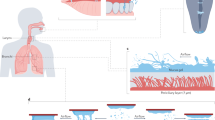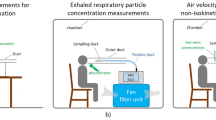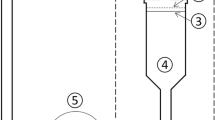Abstract
THE interest of those concerned in any way with the provision of protection against inhalation hazards, especially those associated with work with radioactive materials, has been stimulated by the publication of the report of the Task Group on Lung Dynamics for Committee II of the International Commission on Radiological Protection1. Investigations in the Health Physics and Medical Division at AERE, Harwell, into the behaviour of inhaled radioactive aerosol particles in the human respiratory tract have started—with the cooperation of three volunteer subjects—with a study of deposition in the nasopharyngeal compartment. The experiments followed the somewhat artificial procedure of earlier investigators and aerosols were drawn through the nose and mouth at flow rates of 5, 10, 20, 30 and 40 l./min while the subject held his breath.
This is a preview of subscription content, access via your institution
Access options
Subscribe to this journal
Receive 51 print issues and online access
$199.00 per year
only $3.90 per issue
Buy this article
- Purchase on Springer Link
- Instant access to full article PDF
Prices may be subject to local taxes which are calculated during checkout
Similar content being viewed by others
References
Deposition and Retention Models for Internal Dosimetry of the Human Respiratory Tract, Health Phys., 12, 173 (1966).
Author information
Authors and Affiliations
Rights and permissions
About this article
Cite this article
HOUNAM, R., BLACK, A. & WALSH, M. Deposition of Aerosol Particles in the Nasopharyngeal Region of the Human Respiratory Tract. Nature 221, 1254–1255 (1969). https://doi.org/10.1038/2211254a0
Received:
Revised:
Published:
Issue Date:
DOI: https://doi.org/10.1038/2211254a0
Comments
By submitting a comment you agree to abide by our Terms and Community Guidelines. If you find something abusive or that does not comply with our terms or guidelines please flag it as inappropriate.



